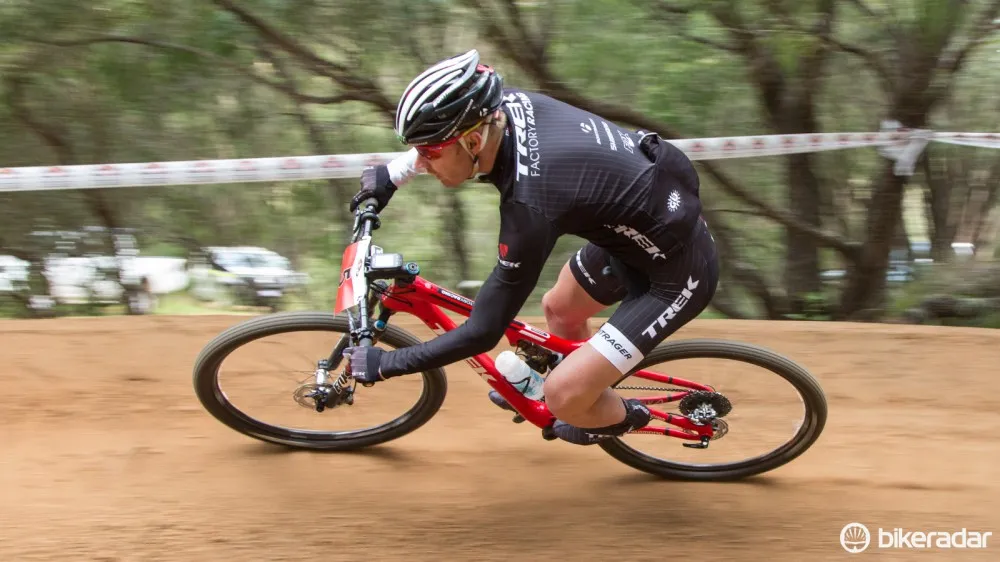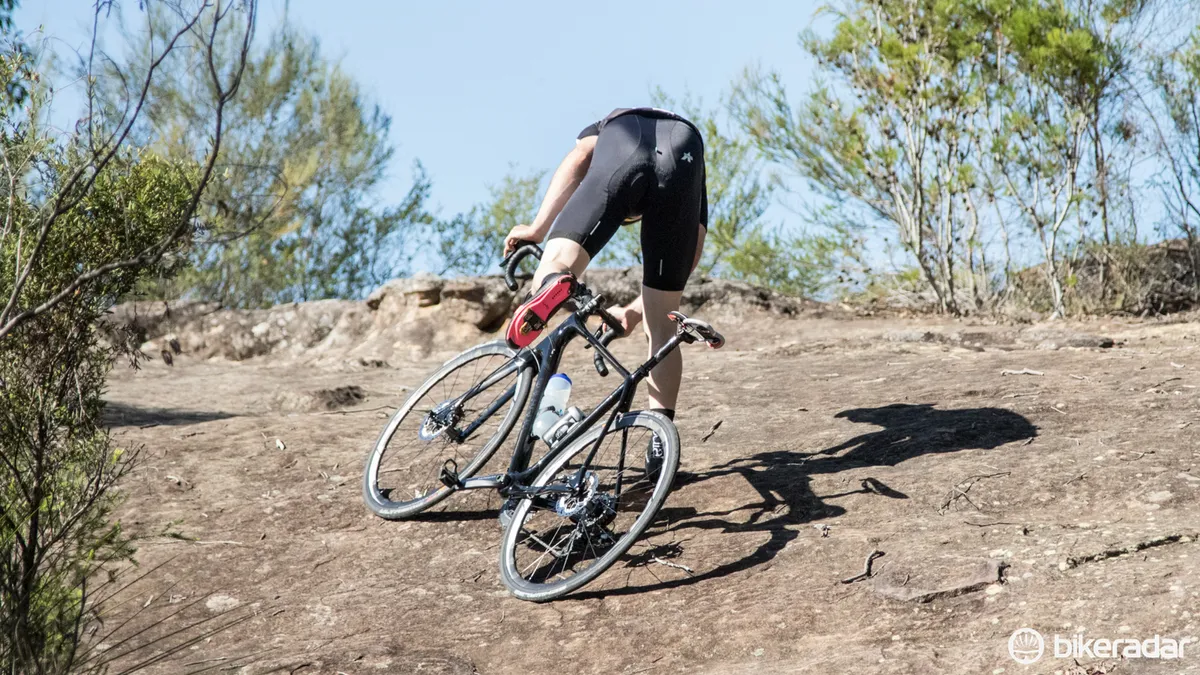Commonly, those who compete in cross-country and marathon mountain biking will ride on road just as much as they do off-road. How well the bikes are set up may affect how well their training crosses over between disciplines.
This article is inspired by the Wild Horizons Rock and Road, a new event coming to Sydney in May, in which will riders will take on an 80km road course and then a 36km mountain bike course.
Riders have the choice between doing the event in pairs and splitting the road and mountain bike courses, but it is possible to do the event solo too.
Those riding it solo will need to consider how best to set up their road and mountain bikes to enable a speedy transition between the two, with as little body adaption as possible.

World Cup rider Dan McConnell knows all about road-to-mountain crossover. We've recently looked at both his mountain and road bike
We've put together this collection tips that will help get the most from your training in both disciplines – the advice is commonly backed up by some of the world’s best cross-country riders. While some go directly against 'the rules' of the fashion police, you won't mind that once your see your event times,
It’s worth noting that this advice is specific to cross-country and marathon type mountain bike discipline.
Bike fit
If you haven’t had a bike fit before, do yourself a favour and get one well before your next major event. A good bike fit will offer the benefit of increased performance, and will help prevent overuse injuries, damage to muscles or stress on joints.

A good bike fit is extremely important for an endurance event – make sure you take both your mountain and road bikes
The key to make sure you get a bike fit on both your bikes. Ensure the fit of your cross-country race bike is close to that of your road bike. It’s common for mountain bikes to have a more upright positionb and to handle very differently, but consider what’s practical and what will best match your road position.
Blair Martin, bike fitter and physiotherapist at The Body Mechanic in Sydney, provided a common example: “A time-trial position is usually very similar to that of a road bike, but with the rider angle rotated forward around the bottom bracket.
"Mountain bike positions are similar to this concept, but rotated in the opposite direction, with a more upright handlebar position and a slacker seat tube angle. This isn’t exact in either case, but it’ll get you close," he said.

Road bike fit shouldn't be identical to your mountain bike fit, but certain aspects, such as saddle height and fore-aft position, should be extremely close
"You mustn’t set up your road bike position to mimic a mountain bike – the riding styles are clearly different and wind resistance is a key factor in road riding. Setting up your road bike as upright as a mountain bike is likely to cause excessive load on the body due to an inefficient position.”
Matthew Hoon, exercise and sport science PhD and researcher at the Australian Catholic University, said: “From a physiological point, it is not necessary to completely mimic your mountain bike setup on your road bike to get training benefits. Additionally, given the differences in MTB and road bike geometry, it may not be feasible to do so. I would rather try for an optimal fit on each bike from a bike fit specialist.
“Barring any drastic discrepancies in bike position (which shouldn’t be the case), the key muscle groups (quadriceps, hamstring, gluteals) and your cardiovascular system will still benefit.”
Crank arm length is another thing to consider for more serious riders. If you’re under 6ft, there’s a good chance your road bike cranks are shorter than your mountain bike (likely 170 or 172.5mm compared to 175mm). This affects your fit on the bike and you’ll develop slightly different pedalling techniques on each bike.
"For the vast majority [of riders] this isn't a huge deal, but in an ideal world you would have them the same," said Martin. “If you’re seeking to spend money on your fit, this would be a great place to start”.
If your focus is on the mountain bike, consider putting mountain bike pedals on your road bike. The best way to ensure your fit is similar between bikes is to use the same shoes too. The use of mountain bike pedals on road bikes is already common, with many riders preferring the easier entry/exit, the dual-sided aspect and the ability to walk safely at the café.
Finally, don’t ignore what’s really the most important contact point – the saddle. Consider using the same saddle on both your road and mountain bike. It’s amazing how much a saddle can affect your fit on the bike – often a saddle will often necessitate a whole new bike fit.
Accessories and clothing
If you spend all your time training on a road bike with bottles and then use a hydration pack on race day, you may run into problems. Either work out a plan to use bottles while racing off-road, or ignore the fashion police and get accustomed to the extra weight on your back by using a hydration pack on the road bike occasionally too.
Martin backs this up, stating he’s seen obvious signs of where the extra weight of a hydration pack has contributed to lower back discomfort for endurance athletes. "It's something you must condition the body for," he says.

Many dual suspension frames don't have room for more than one bottle, forcing riders to seek alternative hydration methods for longer races
The most common argument for not using bottles in a mountain bike race is that most frames only allow space for one bottle. Brackets that mount to the seatpost is one option around this, but sometimes a hydration pack is the only option.
It's also worth looking at your clothing. Consider what you’ll be racing in and then wear that when you train. There's no point spending your training days in lycra to then don the baggies on the day. Sadly, baggies aren’t that comfortable on a road bike, so it’s likely you’ll be racing off-road in your super-hero getup.
Your helmet is worth thinking about too. The need for clear vision is the main reason why road helmets don’t feature visors. If you’re more mountain biker than roadie, wear your mountain bike helmet and remove the visor for the road miles.
“The key is always do practice sessions with all the elements you’ll be using for the race – nutrition, bike, shoes, and so on,” said Hoon. This advice is key for any event, race what you know.
For such an event as the Rock and Road, the advice is to go ride one bike and jump on the other as quickly as possible and see how your body reacts. Do you feel more powerful or perhaps fluid with your pedal strokes on one bike than the other? This will give you a gauge of what to expect and what to fix.






